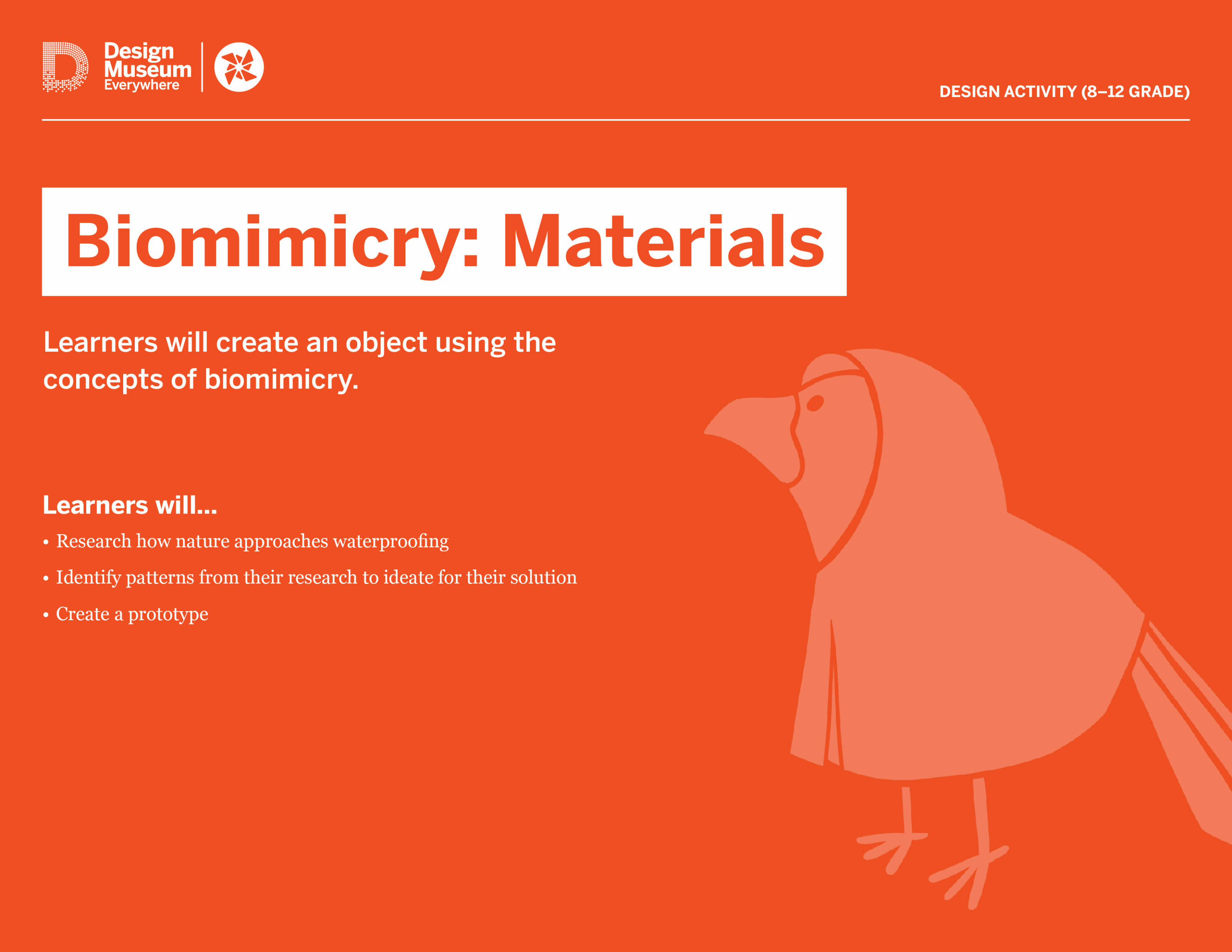Biomimicry: Materials
Design Activity (8-12 Grade)
Learners will create an object using the concepts of biomimicry.

Learners will…
-
Research how nature approaches waterproofing
-
Identify patterns from their research to ideate for their solution
-
Create a prototype
Share your creations on social media with #DesignTogether and we’ll feature examples in our Design Together online gallery.
INSTRUCTIONS
-
Begin by discussing the concept of biomimicry. You can find more info on biomimicry by downloading our PDF or by visiting biomimicry.org.
Sample Questions: What do you think biomimicry is? Can you break down the root words to guess? -
Challenge your learner to reverse engineer a few examples. Start by giving them an example of the final solution and ask them to think through what part of nature was used as inspiration.
-
Once they have a good grasp on the concept, it’s time for their challenge. They will be tasked with creating a waterproof body covering using the concept of biomimicry.
Your learner should first choose what type of covering they’re interested in creating. Examples include: ponchos, jackets, shirts, socks, overalls, hats, etc. -
After they have chosen their covering, encourage your learner to begin researching by looking at how nature approaches waterproofing. Let them know that they should only be focusing on biological examples and not looking towards currently manufactured products.
Sample Guiding Questions: What animals need to be waterproof? How do plants not get weighed down in the rain? Are there any insects that can dive into pools of water? What are some animals we know get soaked in the rain and why? -
Encourage your learner to focus on the materials they would need to design and use in this, not necessarily just the shape or form of their design.
-
With their research notes in mind, challenge your learner to come up with as many ideas as they can in 20 minutes for the material they would use. Ask them to focus on characteristics of the materials and to connect their characteristics to a research point.
Example: Thinking of how ducks cover their feathers in oil to stay waterproofed, the fabric could be infused with some kind of oil. -
After they have thought of as many ideas as possible, it’s time to prototype. Encourage your learner to sketch or work through a physical prototype.
Example: drawing a scaled fabric that allows for quick water run-off or brushing coconut oil on a piece of cotton fabric to see if it helps repel water.
